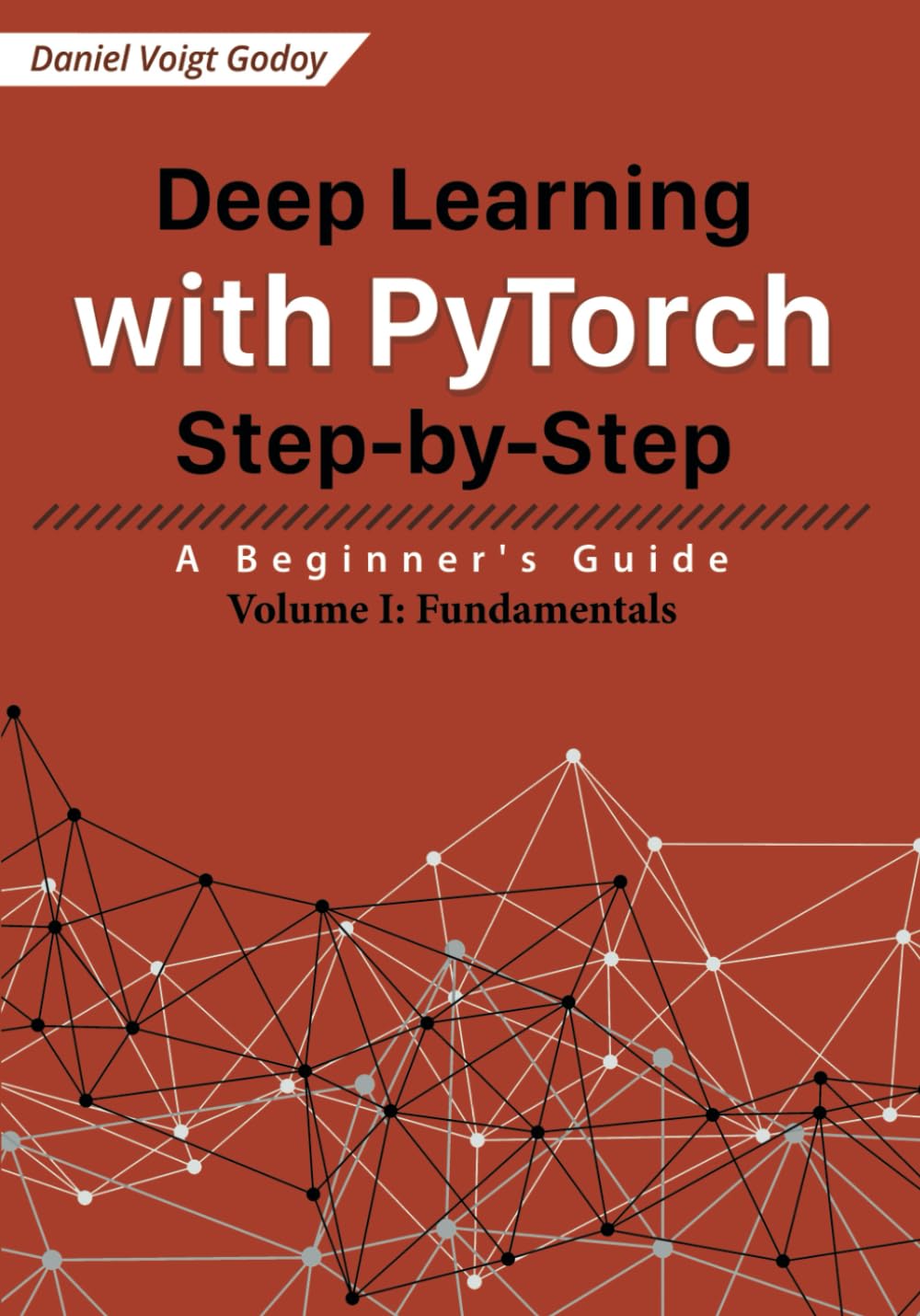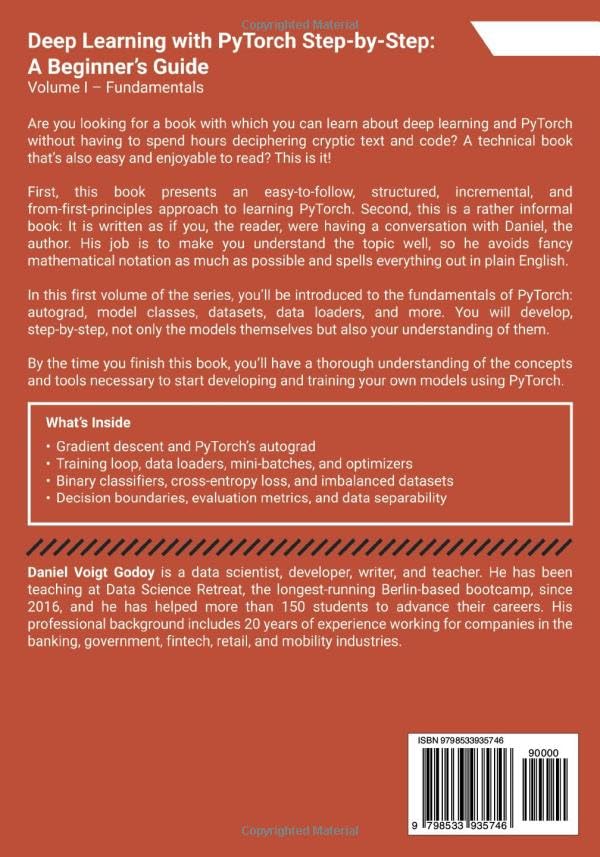All Categories



Deep Learning with PyTorch Step-by-Step: A Beginner's Guide: Volume I: Fundamentals
Share Tweet
Get it between 2025-03-12 to 2025-03-19. Additional 3 business days for provincial shipping.
*Price and Stocks may change without prior notice
*Packaging of actual item may differ from photo shown
- Electrical items MAY be 110 volts.
- 7 Day Return Policy
- All products are genuine and original
- Cash On Delivery/Cash Upon Pickup Available








About Deep Learning With PyTorch Step-by-Step: A
Revised for PyTorch 2.x! Why this book? Are you looking for a book where you can learn about deep learning and PyTorch without having to spend hours deciphering cryptic text and code? A technical book that’s also easy and enjoyable to read? This is it! How is this book different? First, this book presents an easy-to-follow, structured, incremental, and from-first-principles approach to learning PyTorch. Second, this is a rather informal book: It is written as if you, the reader, were having a conversation with Daniel, the author. His job is to make you understand the topic well, so he avoids fancy mathematical notation as much as possible and spells everything out in plain English. What will I learn? In this first volume of the series, you’ll be introduced to the fundamentals of PyTorch: autograd, model classes, datasets, data loaders, and more. You will develop, step-by-step, not only the models themselves but also your understanding of them. By the time you finish this book, you’ll have a thorough understanding of the concepts and tools necessary to start developing and training your own models using PyTorch. If you have absolutely no experience with PyTorch, this is your starting point. What’s Inside Gradient descent and PyTorch’s autograd Training loop, data loaders, mini-batches, and optimizers Binary classifiers, cross-entropy loss, and imbalanced datasets Decision boundaries, evaluation metrics, and data separability



















